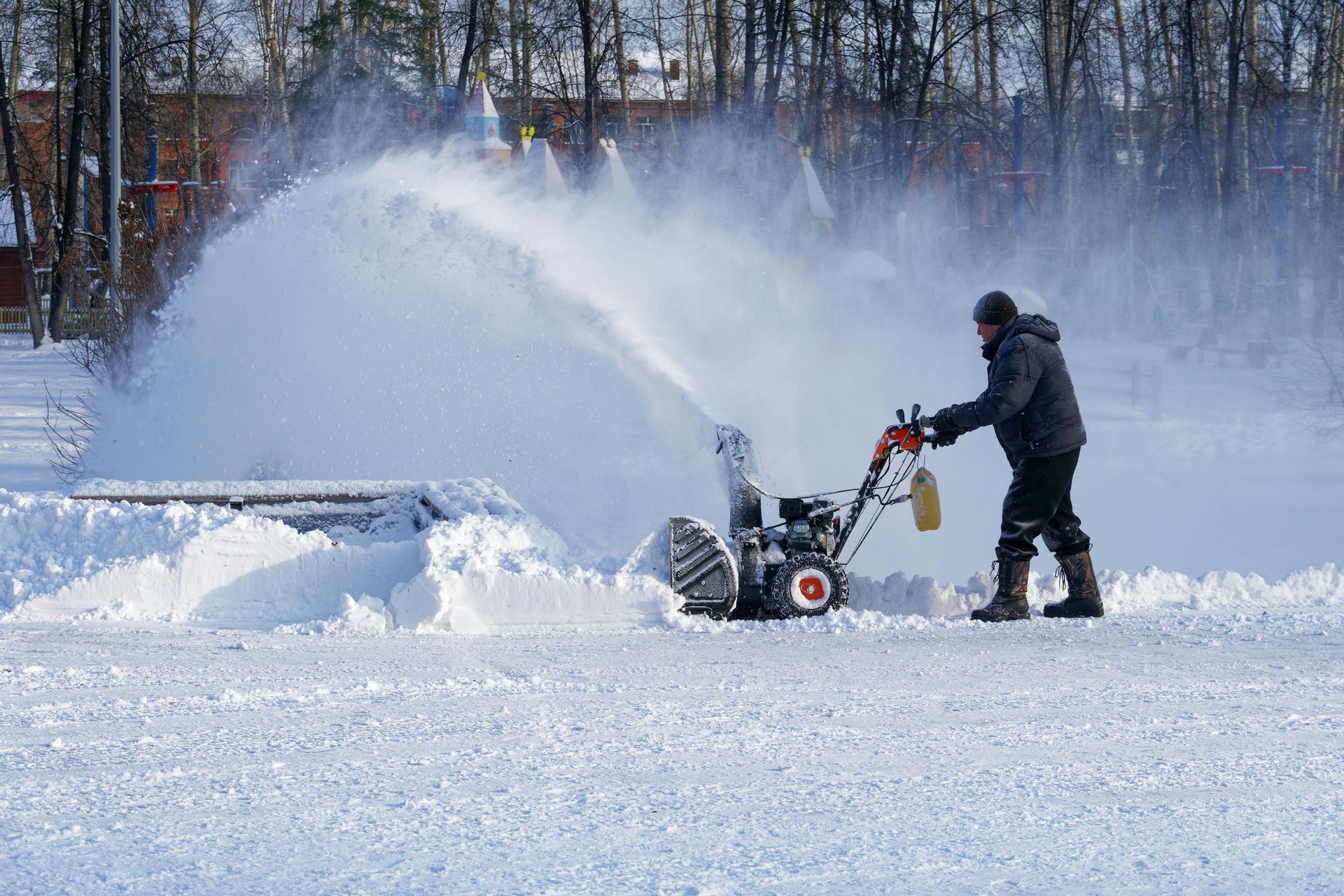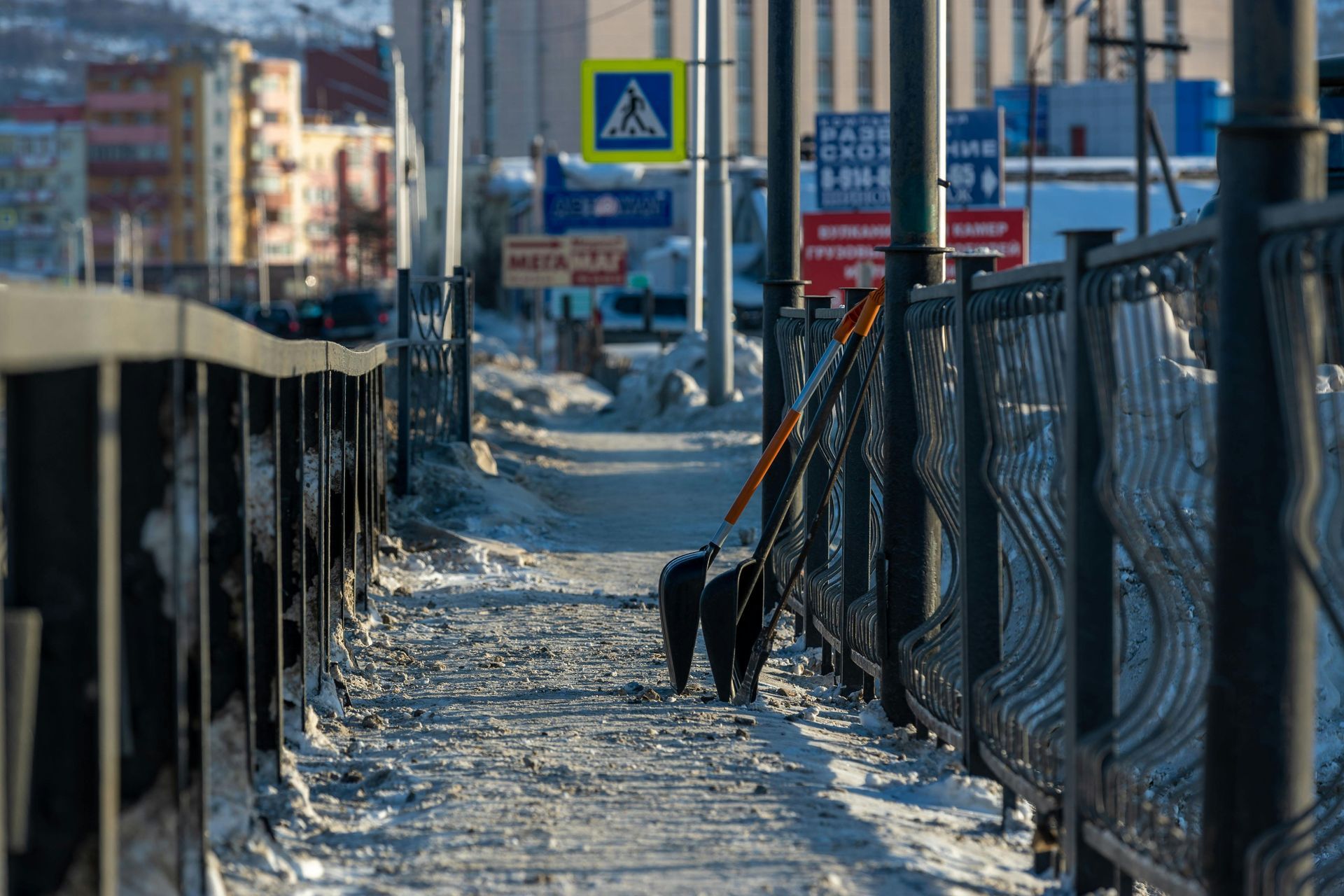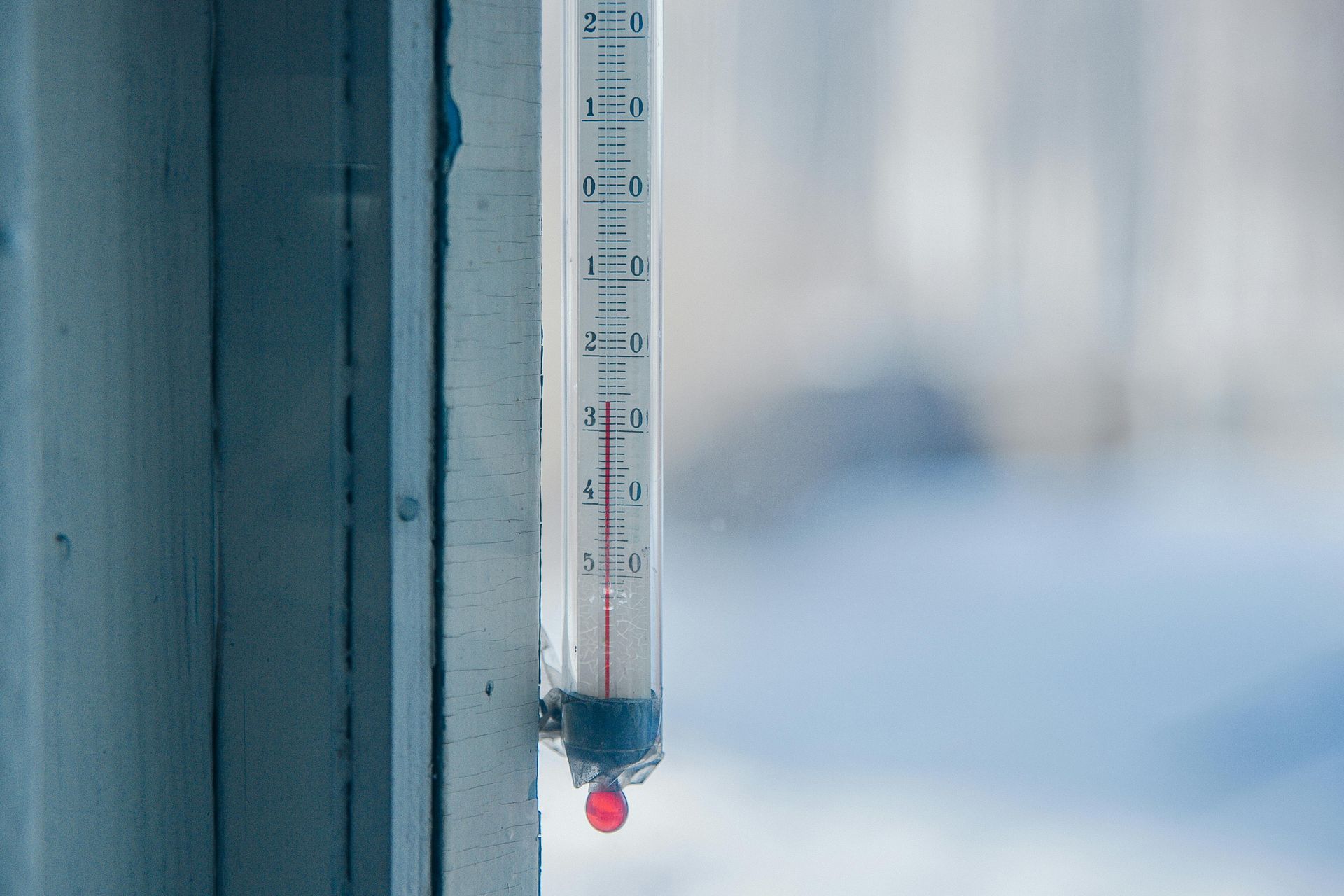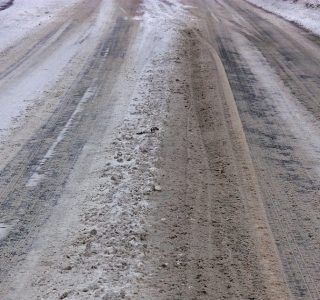Portland Snow Removal Laws: Understanding Your Legal Obligations in 2025
Brad Caton • November 19, 2025
When Portland's sidewalks turn into ice rinks, property owners face more than just frustrated pedestrians—they face unlimited legal liability that can cost hundreds of thousands of dollars in premises liability lawsuits. Yet Portland's snow removal ordinance contains no time limits, no enforcement fines, and no clear guidance on what "remove snow and ice" actually means in practice.
Portland Municipal Code 17.28.025 places full responsibility on property owners, but its deliberately open-ended language creates a unique legal vulnerability. Understanding what the law actually requires—and what happens when someone gets injured—can mean the difference between winter peace of mind and a financial catastrophe that your insurance may not fully cover.
The Law That Creates Unlimited Liability
Portland Municipal Code Section 17.28.025 is deceptively simple, stating that owners and occupants of land adjacent to any street are responsible for snow and ice removal from sidewalks abutting their property, notwithstanding any time limitations. More critically, property owners are liable for any and all damages to any person who is injured or suffers damage from failure to remove snow or ice accumulations. They're also liable to the City for any amounts paid or incurred from claims, judgments, settlements, and all reasonable investigation costs and attorney fees.
That's it. Unlike neighboring jurisdictions that specify exact deadlines—Beaverton requires clearance within 4 daylight hours, Lake Oswego within 2-4 hours depending on time of day, and Hillsboro within 8 daylight hours—Portland opted for maximum flexibility and maximum liability exposure. The phrase "notwithstanding any time limitations" is particularly significant. It means there is no statutory deadline, no safe harbor, no bright line. You are simply responsible, period. And if someone gets hurt, you pay—for everything.
This open-ended structure creates a situation where property owners must rely on legal precedent, attorney guidance, and reasonable person standards to determine what constitutes adequate compliance. Unlike cities with clear 12-hour or 24-hour deadlines, Portland property owners operate in legal ambiguity that gets resolved only after someone is injured and a lawsuit determines whether your actions were "reasonable."
What Portland's "Non-Enforcement" Actually Means for You
Here's what makes Portland uniquely dangerous for property owners: the city doesn't issue fines for uncleared sidewalks. There are no $50 warnings, no $250 commercial property penalties, no escalating citation structure that other cities use to encourage compliance and provide warnings before serious consequences occur.
Instead, Portland takes a different approach that shifts 100% of the financial risk onto property owners through civil liability. The Portland Bureau of Transportation explicitly states on their website that they do NOT remove snow and ice from sidewalks and urge property owners to clear paths as soon as possible after a storm. The bureau clears approximately 1,749 lane miles of priority "snow and ice" routes out of 4,881 total lane miles, but sidewalks are entirely the property owner's responsibility.
This absence of city fines doesn't mean you're off the hook—it means you're facing potentially unlimited exposure through premises liability lawsuits rather than predictable municipal penalties. According to Portland attorney Jason Kafoury of Kafoury & McDougal, his firm sees multiple sidewalk injury lawsuits after every big Portland ice storm, and these cases are typically covered by homeowners or renters insurance policies.
The city's enforcement focus is primarily on chronic sidewalk hazards like tree roots and permanent damage, not temporary snow conditions. However, this doesn't protect you from injured pedestrians who can sue you directly—and the city can also pursue you for any costs it incurs from slip-and-fall claims. Kafoury notes that an injury case would probably hinge on what a reasonable person would do, so failing to remove snow after a couple days would probably land a homeowner in more trouble than failing to remove it immediately during a blizzard.
The Real Financial Danger: Unlimited Premises Liability Exposure
While Seattle property owners face cautionary tales of $260,000 settlements, Portland property owners face the same unlimited liability with even less guidance on compliance. Under Oregon premises liability law, injured parties can recover both economic and non-economic damages, with Oregon currently capping non-economic damages like pain and suffering at $500,000 for most cases. But don't let that cap fool you—economic damages have no limit whatsoever.
Medical bills, lost wages, future care costs, permanent disability accommodations, and ongoing treatment expenses can push total settlements well beyond six figures for serious injuries. The $500,000 cap applies only to subjective pain and suffering damages, not to the actual financial costs of the injury, which can be substantially higher for severe cases requiring surgery, rehabilitation, or permanent lifestyle modifications.
To successfully bring a premises liability claim in Oregon, an injured party must prove four essential elements. First, they must establish duty of care—that the property owner owed a duty to maintain safe conditions on adjacent sidewalks. Second, they must show breach of duty—that the owner failed to meet this standard by not removing snow or ice in a timely manner. Third, they must demonstrate causation—that the uncleared sidewalk directly caused the fall and resulting injuries. Finally, they must prove damages—that the fall resulted in compensable injuries with actual financial consequences.
For Portland property owners, the legal burden becomes especially problematic because there's no statutory timeframe to defend against. A judge or jury evaluating whether you "should have" removed snow will consider numerous factors: how long after snowfall stopped the accumulation remained, weather conditions and temperature patterns, whether the hazard was obvious to pedestrians, what preventative measures you took or didn't take, whether you were physically present and able to clear, what other property owners in the area did, and industry standards and reasonable expectations for the specific circumstances.
Based on recent Oregon premises liability settlements and verdicts, minor injuries like bruises and sprains typically settle for $10,000-$25,000. Moderate injuries such as fractures requiring treatment range from $25,000-$100,000. Serious injuries including torn ligaments, dislocations, and surgical repairs settle for $100,000-$250,000. Severe injuries involving permanent disability, traumatic brain injury, or spinal damage reach $250,000-$850,000 or higher. Catastrophic injuries regularly result in multi-million dollar settlements.
Recent examples from Portland-area settlements paint a sobering picture: $759,000 for a fractured shoulder from a fall at a restaurant, $250,000 for a torn ligament and dislocated knee, and $850,000 for a woman who suffered a broken arm and facial injuries. Medical bills, lost wages, pain and suffering, permanent disability, future care costs, and loss of quality of life all factor into damage calculations. And remember: under Portland's ordinance, you're also liable to the City for any costs they incur defending or settling claims arising from your failure to clear sidewalks.
Decoding "As Soon As Possible": The Practical Standard
While Portland refuses to establish a specific deadline, several factors have emerged from legal precedent, attorney guidance, and practical considerations that help define what "as soon as possible" means in 2025. The Portland Bureau of Transportation's website language is clear: clear sidewalks as soon as possible after a storm. The transportation bureau specifically notes that residents should be prepared with ice melt and shovels to clear a path at least 3-feet wide as soon as possible after a storm.
This guidance suggests that waiting until the next day—or worse, several days—exposes you to significant liability risk. The practical interpretation focuses on beginning clearing during safe working hours after accumulation ends. If snow stops falling at 2 AM, you're not expected to start shoveling in the dark at unsafe hours—but waiting until afternoon the next day could be pushing your luck. The expectation is maintaining a minimum 3-foot-wide path, with full sidewalk width preferred, and acting during daylight hours when it's safe and visible to work.

Looking at what surrounding jurisdictions require provides valuable context for what a reasonable Portland property owner should do. Beaverton requires clearing within 4 daylight hours after snow stops. Lake Oswego mandates 2 daylight hours for daytime accumulation and 4 hours for overnight accumulation. Hillsboro allows 8 daylight hours after storm coverage. Tualatin has one of the strictest standards at just 2 daylight hours. These timeframes suggest that Portland property owners who clear within 4-8 daylight hours are likely meeting reasonable standards, while those who wait 24 hours or more face significant liability exposure—especially when neighbors have already cleared their walks and your property stands out as the sole hazard on the block.
During multi-day snow events, property owners face a particular challenge: clear continuously during the storm or wait until it ends? Portland's law provides no specific guidance, but best practices suggest prioritizing safety first—continuously clearing during dangerous conditions isn't reasonable or expected. However, if the storm allows safe intervals, periodic clearing prevents massive accumulation that becomes more dangerous and difficult to remove. Once accumulation stops, begin clearing promptly during daylight hours, and monitor carefully for refreezing as Portland's temperatures often hover around freezing, causing dangerous melt-refreeze cycles.
Proactive Protection: Prevention Strategies That Demonstrate Reasonable Care
The ordinance doesn't use language about "preventing" hazards like Seattle's law does, but Oregon premises liability law creates the same practical obligation. Property owners who take proactive steps demonstrate reasonable care that can significantly strengthen their legal position if someone is injured. These preventative measures show good faith efforts and can be the difference between winning and losing a premises liability case.
Pre-treating sidewalks with ice melt before storms prevents ice from bonding to pavement surfaces and demonstrates proactive risk management. Clearing snow before it compacts into ice is far more effective than trying to remove ice after it forms, and shows attentiveness to conditions. Applying sand or environmentally-safe ice melt products to prevent refreezing addresses Portland's notorious freeze-thaw cycles. Monitoring conditions during Portland's temperature fluctuations—which can swing from below freezing to above freezing multiple times in a single day—shows ongoing attention to safety. Documenting clearing efforts with time-stamped photos creates evidence of your reasonable care that can be invaluable in defending against liability claims.
Property owners who take these preventative steps can demonstrate good faith efforts to maintain safe conditions, even if conditions deteriorate between clearing efforts due to weather beyond their control. Courts and juries look favorably on defendants who can show they took reasonable precautions and maintained vigilance, even when the weather created challenging conditions that made perfect safety impossible to maintain continuously.
Snow Disposal: Where It Goes Matters as Much as Clearing
Portland's snow removal requirements don't end with clearing your sidewalk—where you put the snow carries significant legal and practical implications that many property owners overlook until they face problems. Based on Portland Bureau of Transportation guidance and standard Portland ordinances, you cannot dump snow into public streets and roadways, onto sidewalks including your neighbor's cleared walk, into public rights-of-way that impede pedestrian passage, around fire hydrants or emergency access points, near traffic signs, signals, or bike lanes, into storm drains or catch basins, or onto adjacent properties without explicit permission.
The prohibition on dumping snow into streets addresses both safety and infrastructure concerns that become critical during Portland's winter events. Snow pushed into roadways creates hazards for vehicles and cyclists navigating already-dangerous conditions. Snow covering storm drains can cause serious flooding when temperatures rise during Portland's typical freeze-thaw cycles, creating property damage and additional liability. Additionally, when PBOT plows its designated snow and ice routes—approximately 1,749 lane miles out of 4,881 total lane miles—plows push street snow toward curbs. If you've shoveled your sidewalk snow into the street, city equipment will return it to your walkway, creating frustration and requiring you to do the work twice.
You may place snow in your own yard or landscaped areas where melting won't create new hazards, on private property with explicit permission from the owner, in areas where melting water can be absorbed into soil rather than running onto sidewalks or streets creating ice hazards, and away from building foundations to prevent water intrusion and damage. For property owners with limited yard space—particularly common in Portland's dense inner neighborhoods like the Pearl District, Northwest, and inner Southeast—this creates genuine challenges. The law requires removal but limits disposal options significantly.

This is where professional snow removal services become not just convenient but practically necessary for many property owners. Professional services have the equipment and knowledge to handle snow disposal properly and in full compliance with regulations, protecting you from both the initial liability of uncleared walks and the secondary liability of improper snow disposal.
Portland's Unique Climate Threat: Ice Storms vs Traditional Snow
Portland's snow patterns make preparation more important than ever, but they also create unique challenges that differ significantly from traditional snow-belt cities. While the city averages only 3-4.5 inches of snow annually—even less than Seattle's 6.8 inches—winter events have become less predictable and occasionally paralyzing when they do occur. Portland averages about 18 days of snow per year, mostly occurring between December and February, but the real threat comes from ice storms rather than traditional snowfall.
Portland's infrastructure and culture are simply not built for winter weather. The city has steep hills throughout its neighborhoods, limited snow removal equipment compared to Midwest or East Coast cities, and a population largely inexperienced with winter driving and snow management. When snow or ice comes, even a few inches can shut down the entire city for days. Recent significant weather events demonstrate this vulnerability: the February 2021 ice storm caused widespread power outages and dangerous conditions lasting over a week, while January 2024 saw multiple winter storms create hazardous conditions across the metro area. Ongoing climate uncertainty means warming trends are creating more ice events—rain turning to freezing rain—rather than traditional snow accumulation.
This unpredictability makes preparation absolutely critical. Portland property owners cannot rely on the city's reputation for mild winters—when snow or ice comes, it often arrives with maximum impact and minimal warning. Unlike cities that get consistent snow allowing residents to develop routines and expertise, Portland's infrequent events mean most property owners lack experience and proper equipment.

Unlike cities that get consistent snow, Portland often experiences freezing rain and ice storms that create even more dangerous conditions than traditional snowfall. Ice accumulation cannot be easily shoveled like snow—it requires chemical de-icers or specialized removal equipment. Ice refreezes quickly during Portland's temperature fluctuations, which can swing from 25°F to 40°F and back again within hours. Ice creates longer-lasting hazards than typical snowfall that might melt in afternoon sun. Most significantly, ice is far more likely to cause serious slip-and-fall injuries than snow, as it provides almost no traction and is often nearly invisible, especially the notorious "black ice" that forms on pavement.
This means Portland property owners need both snow removal capabilities and proper ice prevention and treatment strategies. Traditional rock salt becomes significantly less effective at Portland's typical near-freezing temperatures—most rock salt works poorly below 25°F. This makes professional-grade liquid ice melt products absolutely essential for Portland conditions, as they work at lower temperatures and prevent ice from bonding to pavement in the first place.
Why Professional Snow Management Is Essential in Portland's Legal Environment
Given Portland's open-ended liability standard with no defined timeframes, absence of enforcement fines that might serve as warnings before serious consequences, and substantial premises liability exposure reaching hundreds of thousands of dollars, professional snow removal services have shifted from luxury amenity to essential risk mitigation that every responsible property owner should seriously consider.
This is where companies like Invictus Snowfighters—the only ISO SN9001 certified snow removal company in the entire Pacific Northwest, serving Vancouver, Seattle, and Portland—provide critical value that goes far beyond the physical act of clearing snow. Portland's legal framework makes professional snow management even more critical than in cities with defined time limits and warning systems.
Professional services provide documented response times that eliminate uncertainty about whether you've met an undefined "as soon as possible" standard. They contractually commit to specific response times, creating documentation that you took reasonable steps to maintain safe conditions. This documentation becomes your primary defense in premises liability claims—you can show exactly when service was requested, when crews arrived, and when clearing was completed, with GPS tracking and photographic evidence.

Heavy-duty commercial equipment clears snow and ice far more effectively than consumer-grade shovels and rock salt purchased at hardware stores. Professional-grade de-icing products work at lower temperatures than traditional rock salt, prevent ice from bonding to pavement surfaces in the first place, are environmentally safe for Portland's watershed concerns that are particularly important given the city's environmental focus, and reduce refreezing during temperature fluctuations that are Portland's most dangerous feature.
Invictus Snowfighters offers their proprietary Easy Ice Melt liquid formula, which is LEED-compliant and environmentally friendly while being highly effective at Portland's typical temperature ranges. This product is available in multiple sizes—4, 10, 20, 250, and 1000 liters—making it accessible for both residential and large commercial applications. The liquid formula works faster than traditional granular products and provides better coverage with less environmental impact.
Professional services provide comprehensive liability documentation including GPS-tracked verification of service showing exactly where and when crews worked, timestamps showing exact completion times that prove rapid response, photographic documentation of conditions before and after service, and detailed records of materials applied and techniques used. This is exactly the documentation you need if someone claims you failed to clear your sidewalk in a timely manner—you can produce concrete evidence of your reasonable care and professional response.
24/7 Monitoring: Essential for Portland's Unpredictable Weather
Snow and ice don't fall on convenient schedules, and Portland's weather patterns are notoriously unpredictable even by Pacific Northwest standards. Professional services monitor conditions around the clock using advanced meteorological tools and local expertise. They deploy crews regardless of whether it's 3 AM on a Sunday morning, during your family vacation when you're out of state, or on major holidays when you're focused on other priorities.
For Portland's unpredictable ice events—which can develop rapidly as rain transitions to freezing rain with little warning—this continuous monitoring is absolutely essential. By the time you wake up and realize conditions have changed overnight, your sidewalk may already be covered in a layer of ice that will take hours to treat properly. Professional services detect these transitions and begin treatment before conditions become hazardous, providing proactive protection rather than reactive scrambling.

Preventative treatment programs represent one of the most valuable aspects of professional snow management. Proactive anti-icing treatments applied before storms prevent snow and ice from bonding to pavement surfaces, making removal dramatically easier and reducing the hazard period that creates liability exposure. For Portland's freeze-thaw cycles, preventative treatment is especially valuable because it addresses the refreezing problem that causes injuries days after the initial storm has passed.
Professional snow removal companies also carry their own comprehensive liability insurance and workers' compensation coverage, adding an additional layer of protection to your property. If a service provider's employee is injured while clearing your property, their insurance covers it—not your homeowners or commercial property insurance. This separation of liability provides significant additional protection and peace of mind.
Invictus Snowfighters: Portland's ISO-Certified Professional Solution
As the only ISO SN9001 certified snow removal company in the entire Pacific Northwest and ASCA (Accredited Snow Contractors Association) accredited, Invictus Snowfighters brings enterprise-grade capabilities typically reserved for major corporations and government facilities to Portland property owners of all sizes. Their certifications aren't just marketing claims—they represent verified compliance with international standards for quality management and industry-specific best practices.
Invictus provides guaranteed response times that eliminate all ambiguity about compliance with Portland's vague "as soon as possible" standard. When you contract with Invictus, you receive specific contractual commitments about response times, creating legal documentation of your reasonable care. Their heavy-duty modern equipment is specifically designed for efficient clearing in Pacific Northwest conditions, handling both traditional snow and the challenging ice conditions that plague Portland winters.
The company's proprietary Easy Ice Melt environmentally friendly formula works effectively in Portland's climate, addressing both the low-temperature effectiveness problem that plagues traditional rock salt and the environmental concerns that are paramount in Portland's eco-conscious community. The product is LEED-compliant and safe for watersheds, pets, and vegetation while providing superior ice prevention and melting capabilities.

Real-time updates via phone app mean you know exactly when service was completed, can monitor crew locations and progress, and have immediate documentation for your records. This transparency provides peace of mind and creates the detailed records that protect you from liability claims. The app shows GPS tracking of crews, timestamps of arrival and completion, photographic documentation of conditions, and detailed service reports—all instantly accessible from your smartphone.
Invictus operates 24/7 availability for Portland's unpredictable winter weather patterns. Their operations center monitors conditions continuously, and crews are on standby throughout the winter season ready to deploy within contractually guaranteed timeframes. Whether the storm hits at 2 AM on Christmas morning or during a weekday afternoon, Invictus responds consistently and professionally.
For commercial properties, government facilities, and large-scale residential developments, Invictus offers Gold and platinum service plans specifically designed for high-traffic, high-liability properties. These comprehensive plans include priority response, preventative treatment programs, unlimited service calls during snow events, dedicated account management, and enhanced liability documentation. The investment in platinum-level service is often less than a single moderate slip-and-fall settlement, making it a financially sound risk mitigation strategy.
The company's risk mitigation focus is specifically designed to reduce premises liability exposure, not just clear snow. Every aspect of their service—from GPS tracking to photographic documentation to contractual response commitments—is engineered to provide property owners with maximum legal protection in addition to cleared sidewalks. They understand that in Portland's legal environment, documentation of reasonable care is just as important as the physical snow removal itself.
Your Comprehensive Action Plan for Portland Winters
Understanding Portland's undefined "as soon as possible" requirement means thinking proactively rather than reactively. Success requires planning, preparation, proper equipment or professional services, and consistent execution. Here's your practical compliance strategy broken down by timeframe and priority.
Before snow season arrives in October and November, secure professional snow removal service with guaranteed response times and documented service completion, or stock ice melt and necessary equipment if handling removal yourself. At minimum, you need a quality shovel, three or more bags of professional-grade ice melt rated for Portland's temperature range, and a spreader for even application. Document your properties with photographs showing normal sidewalk conditions before winter—these baseline photos become valuable evidence if someone later claims pre-existing hazards contributed to their fall.
Review your liability insurance coverage limits carefully and consider an umbrella policy for additional protection. Standard homeowners policies typically provide $100,000-$300,000 in liability coverage, but serious slip-and-fall injuries can exceed these limits. An umbrella policy providing an additional $1-2 million in coverage costs only a few hundred dollars annually and provides critical protection. Create a contact list for emergency snow service providers with phone numbers and websites readily accessible, and test your plan by identifying where you'll place snow and confirming disposal locations comply with regulations.
When snow or ice is forecast, monitor Portland weather forecasts closely—Portland weather can change rapidly and forecasts become more accurate within 24-48 hours. Apply preventative de-icing treatments to sidewalks 24 hours before expected precipitation if possible. Clear storm drains near your property to prevent flooding during melt periods. Arrange for service coverage if you'll be out of town during the forecast period. Alert your snow removal service about upcoming weather so they can schedule crews appropriately. Prepare backup plans, as Portland stores often sell out of ice melt completely within hours once a storm is forecast.
During snow or ice events, begin clearing as soon as safely possible during daylight hours. Clear a minimum 3-foot-wide path as specified by PBOT guidance, though full sidewalk width is strongly preferred and demonstrates superior care. Remove snow to your property, not the street or neighboring walks. Apply ice melt to prevent refreezing—this is absolutely critical during Portland's temperature swings that create dangerous refreeze conditions. Document your clearing efforts with time-stamped photos showing before and after conditions. Check conditions multiple times during multi-day storms, and monitor for ice formation even after snow stops, as Portland's freeze-thaw cycles create ongoing hazards.
After snowfall or ice stops, complete thorough clearing within 4-8 daylight hours if possible, with sooner being better for demonstrating reasonable care. Pay special attention to ice formation on north-facing walks that don't get sun exposure and may remain icy for days. Monitor for refreezing as Portland temperatures fluctuate above and below freezing, sometimes multiple times per day. Maintain clear, treated pathways until all ice hazard has completely passed—this often means several days after visible snow melts, as ice can persist in shaded areas. Keep documentation of your efforts for at least 2 years, which is Oregon's statute of limitations for personal injury claims.
Special Considerations for Portland's Unique Properties
Portland's topography and building stock create unique challenges that require specific attention. Properties with steep driveways or hillside locations—common throughout Portland's West Hills, Council Crest, and Mount Tabor neighborhoods—create particular hazards. Ice on sloped surfaces is exponentially more dangerous than ice on flat ground. For these properties, professional services with proper equipment aren't just convenient—they're practically essential for safe and effective clearing.
Tree-lined streets, which are characteristic of many Portland neighborhoods, create additional complications during ice storms. Fallen branches during ice events create additional clearing obligations beyond simple snow removal. Heavy ice accumulation can bring down branches days after the initial storm, creating ongoing hazards that require continued monitoring and clearing. Document any tree damage immediately and clear debris promptly to avoid liability for trip-and-fall hazards.
Older sidewalks with pre-existing cracks and displacement increase slip-and-fall risk significantly because uneven surfaces are more dangerous when icy. Document conditions before winter so you can demonstrate that damage existed prior to any claimed incident. Consider repairing seriously damaged sidewalks before winter—the investment in repairs is far less than potential liability from injuries on defective surfaces.
For mixed-use buildings with both commercial and residential spaces, clarify responsibility between commercial tenants and property owners in writing. Ambiguity about who is responsible for clearing creates dangerous gaps in coverage. Commercial tenants typically have higher liability exposure due to greater pedestrian traffic, and should maintain their own commercial liability insurance regardless of who handles physical clearing.
For rental properties, include specific snow removal responsibilities in lease agreements. Oregon law allows landlords to assign sidewalk clearing responsibility to residential tenants through lease provisions, but the property owner remains ultimately liable if tenants fail to comply. If you assign responsibility to tenants, provide them with necessary equipment and clear instructions, and monitor compliance closely. Many Portland landlords choose to handle snow removal themselves or hire professional services rather than relying on tenants, viewing it as essential liability management rather than an optional service.
Conclusion: Portland's Hidden Liability Trap
Portland's snow removal ordinance is deceptively dangerous precisely because of what it doesn't say. The absence of fines and time limits doesn't mean reduced obligations—it means unlimited liability exposure through premises liability lawsuits with no clear safe harbor for compliance, no warning citations before serious consequences, and no way to know for certain whether you've done enough until after someone is injured.
Property owners who understand their obligations—and take proactive steps to meet them—protect themselves from potentially devastating civil liability that can reach hundreds of thousands of dollars. Whether you choose professional snow removal services like Invictus Snowfighters or handle clearing yourself with proper equipment and diligent monitoring, the key is demonstrating good faith efforts to maintain safe sidewalks promptly after snow or ice accumulation.
In Portland's unpredictable winter climate with no statutory deadline and unlimited liability exposure, "as soon as possible" ultimately means: during safe daylight hours after accumulation stops, but generally within 4-8 hours of snow or ice ending, using methods that prevent hazardous conditions from forming or persisting, with special attention to Portland's freeze-thaw cycles that create ongoing refreezing risks, and with proper documentation of your reasonable efforts.
The property owners who get sued aren't the ones who cleared their sidewalks 10 hours after the snow stopped—they're the ones who didn't clear at all, waited days while ice accumulated, or failed to treat refreezing conditions during Portland's temperature fluctuations. They're the ones who assumed Portland's mild reputation meant they didn't need to worry, or who treated snow removal as optional rather than a legal obligation with unlimited financial consequences.
With average settlements ranging from $25,000 for moderate injuries to $850,000 or more for serious harm, and with the city able to pursue you for their costs as well, the investment in professional snow removal services or proper equipment becomes trivial compared to your liability exposure. A season of professional service from Invictus Snowfighters costs a fraction of even a minor slip-and-fall settlement, while providing comprehensive protection, documentation, and peace of mind.
Don't be that property owner who learns about Portland's unlimited liability the hard way. Portland's law gives you no excuses, no time limits, no warnings, and no second chances—just unlimited liability when someone gets hurt on your uncleared sidewalk. Take action before snow falls, not after someone falls.
Recent Posts







